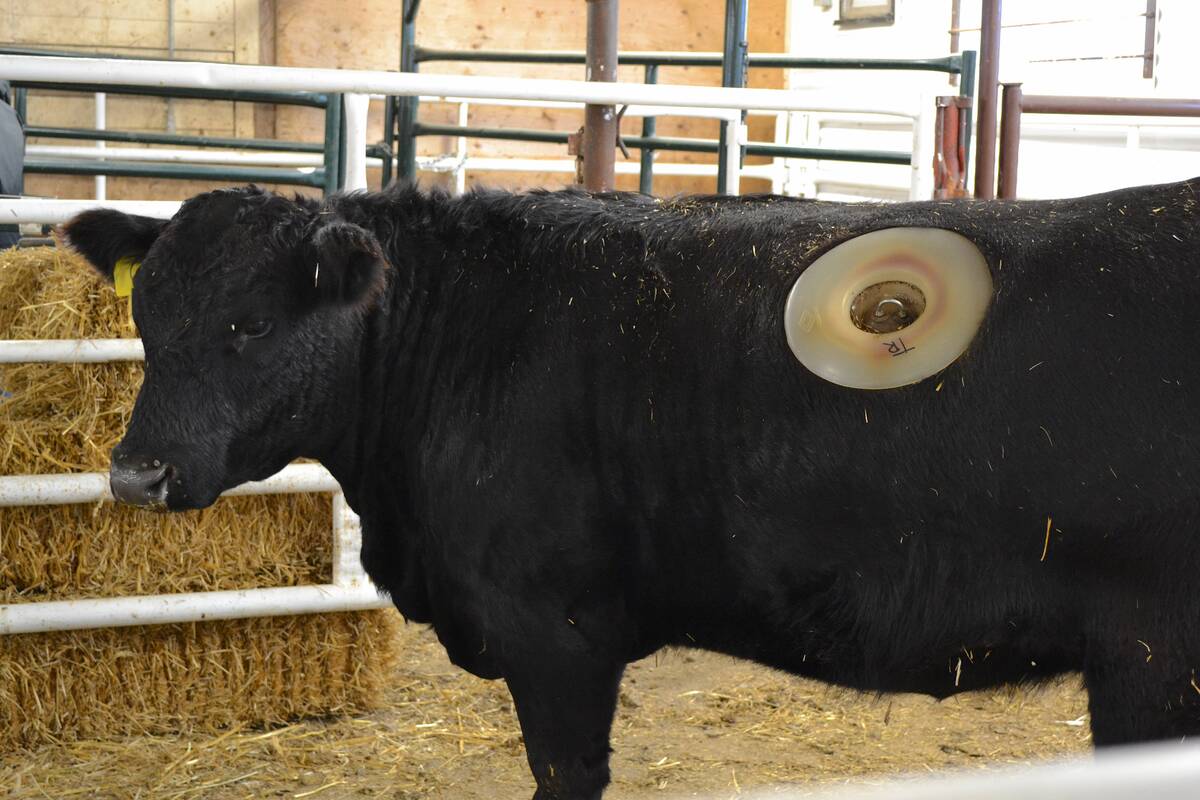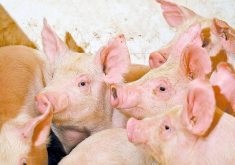Just how big a risk is transportation for BRD in calves?
It’s not an easy question to answer, because one of the biggest risk factors is stress, according to one Alberta researcher.
Karen Schwartzkopf-Genswein, a beef welfare scientist at Agriculture and Agri-food Lethbridge, was one of the lead researchers in a recently completed four-year study of the question, funded by the Beef Science Cluster.
Read Also

Lakeland College studying livestock wellness through cannulated heifers
Lakeland College’s Applied Research Team is working with six cannulated heifers on a handful of research projects.
She told AFE recently that a highly stressed calf is the key ingredient in BRD, but that stress can come from a myriad of sources related to movement.
That can include weaning, change in diet, changes in location and commingling at an auction mart.
“All of these factors can increase stress and stress causes illness just like in humans,” she said. “Stress hormones have a negative effect on immunity. These calves are under high risk, particularly in their first month in the feedlot.”
“Even though scientists have been studying BRD for many years, it continues to rank as the number one health issue in Canadian feedlot cattle.”
It is estimated that the disease costs the industry millions of dollars a year.
BRD can also disturb the microbes that live naturally in the respiratory tract, allowing disease-causing microbes to flourish.
Schwartzkopf-Genswein said trips longer than 12 hours and extended periods between feed and water can increase stress, particularly in older or less fit cattle. But transport is not the only factor. Age and condition of the calves, and whether they come directly from the ranch or an auction mart can also impact the degree of stress the calves encounter.
Based on this Schwartzkopf-Genswein and her team designed studies to look at the impact of receiving zero, four, eight or 12 hours of rest in seven- or eight-month old calves that had been sourced directly from a ranch or auction mart. Some had been preconditioned and some had not. The calves experienced either 12 or 36 hours of transport. The team measured cortisol, a common stress hormone, and haptoglobin, an indicator of inflammation. They also measured white and red blood cell counts and recorded whether the calves were treated from or died from BRD in the first 30 days in the feedlot following transport.
Trevor Alexander, a microbiologist and BRD expert from AAFC Lethbridge, also partnered with the project. He collected nasopharyngeal samples from a subset of cattle used in the study so he could characterize the bacterial communities, known to be associated with BRD in the calves. He looked specifically at whether the calves had come from a single ranch or an auction market, and whether they had zero or eight hours rest following road transport. There were four treatment groups:
- auction calves given no rest,
- auction calves given eight hours of rest,
- ranch calves given no rest, and
- ranch calves given eight hours of rest.
With 40 calves per treatment, 12 calves were sampled for stress and immunity indicators and nasopharyngeal bacteria to get a better understanding of which factor caused the most stress and if that affected the amount and type of BRD-related pathogens present in the calves.
Alexander found the auction cattle were more prone to BRD than ranch cattle.
“When cattle were offloaded for a rest, several key bacteria associated with BRD increased for most sampling points after feedlot placement for the ranch-direct cattle group, compared to animals given no rest,” he said.
Cattle who had longer transport also seemed more prone to indicate BRD bacteria.
The results suggest that rest stops and auction markets may be risk factors for BRD, based solely on the increased abundance of BRD-associated bacteria in the upper respiratory tract.
“Unfortunately, we could not link these bacterial communities to disease and outcome because none of the calves got clinically ill with BRD,” said Alexander. Both researchers recommend that larger-scale studies need to be conducted to better understand the relationship between transport, rest, calf management and BRD risk.
Schwartzkopf-Genswein has conducted three separate studies on transport over the last four years.
















